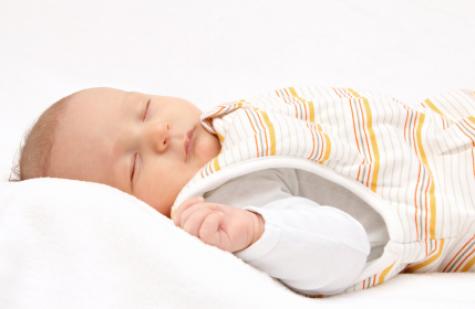As the cooler weather approaches, we start to wonder if babies that wake over night are cold? It is not easy to gauge what to dress a baby in overnight to make sure that their comfort is safe and suitable for the weather conditions.
Around Australia there are so many different climates to consider and this needs to be taken into account when deciding how to dress your baby overnight. As you can imagine a baby in Broome, Western Australia in a tropical climate would have different needs to a baby in Hobart, Tasmania.
A basic guide to go by is to dress your baby for the temperature that will occur around 4am. If you are in parts of Queensland, it may well be very similar to the same temperature when you first settle your baby to sleep in the evening. However, in Perth for example where Caroline's Angels is based, the evening temperature may well be a good 10-15 degrees warmer than the expected 4am temperature.
If there is a big difference and you find your baby is too warmly dressed at the beginning of the night, but will need that extra warmth later in the night, you could consider opening a window or door to allow extra air flow, or an oscillating fan to move the air around; then closing the window, or turning off the fan as you head to bed yourself.
No matter where you live, the use of a heater or air conditioner all night to warm your baby’s room is not advocated. Thermal stress, or overheating is a major contributor to SIDS and we really recommend you check the Sids and Kids website. Babies regulate their temperature through their head and their face.
A study published in 1995 by Tuffnel et al found that heat loss in tummy sleeping babies is 60% less effective that non-tummy sleepers. If a heating device is left on in a baby’s sleep environment overnight, there is nowhere for the baby to transfer heat from their head into the environment and the baby will then overheat – therefore potentially risking SIDS. If you have a cool environment for you baby to sleep in, you may wish to heat the room before they go to sleep but make sure that you turn it off before they go to sleep and for the rest of the night. Do not use electric blankets, wheat bags or hot water bottles in a baby’s cot.
Babies need to sleep in winter without bonnets or beanies on their head and no hoods on their sleep clothing. Dress their bodies warmly, just as you would to keep warm but not too hot. Sleeping bags are ideal and babies can be layered up or down with cotton to keep them warm. Avoid using synthetic materials that do not allow the baby’s skin to breathe and regulate temperature.
Older babies that are more mobile in the night as they move around their sleep space, are better suited to sleeping bags as they then move their covers with them. These babies will not stay under blankets to keep warm and risk covering their heads with blankets which then puts them at risk for SIDS.
It is not necessary to have the baby’s room at a set temperature, but rather make sure that:
1. The baby is dressed warmly without getting hot – use layers of cotton clothing and sleeping bags
2. No head covering while they sleep – blankets, beanies, bonnets
3. No hot water bottles, wheat packs or electric blankets
4. They sleep on their back
5. No heaters or air conditioners on through the night.
If you are struggling with leaking nappies overnight and worried that as they leak it will make your baby cold, we recommend a double nappy for your baby so any excess will leak into the outer layer, or you could add a cloth nappy and pilcher over the nappy to absorb any leakage.
As we farewell our long hot summer, think carefully about your baby’s safety in winter. And hopefully before top long, the new summer will arrive.
Sweet dreams.








 Agree (0)
Agree (0) Disagree (
Disagree (










__small.png)










